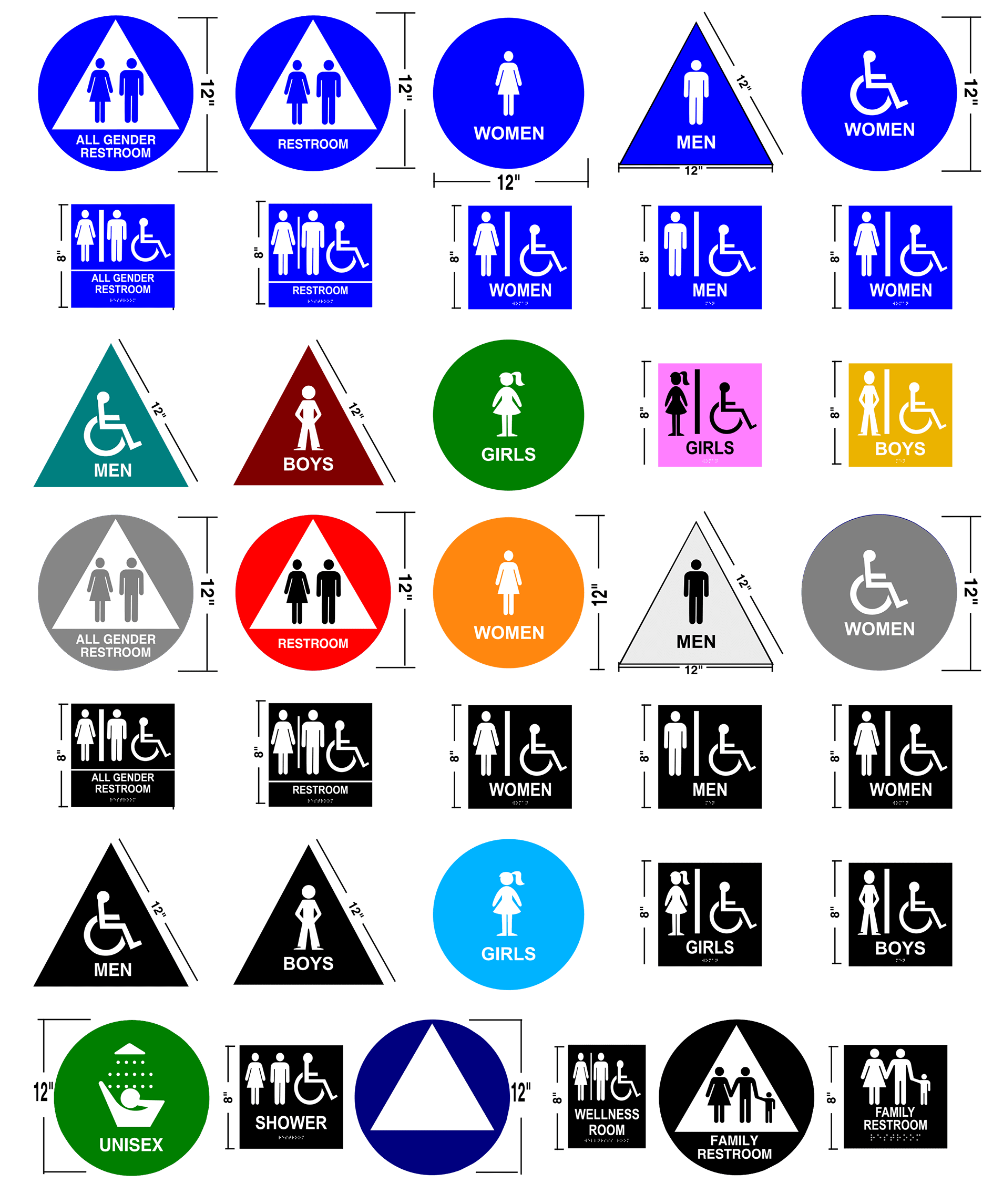Comprehending the Laws Behind ADA Signs
Comprehending the Laws Behind ADA Signs
Blog Article
ADA Signs: Guaranteeing Availability and Conformity in Public Spaces
ADA signage plays an essential function in ensuring access and conformity within public rooms, dramatically adding to an inclusive environment for individuals with specials needs. As we discover the subtleties of ADA signs, from responsive functions to make intricacies, it's important to consider just how these elements coalesce to support the legal rights of all individuals.
Importance of ADA Signs
In contemporary culture, the relevance of ADA signage extends beyond plain conformity with lawful mandates to personify a commitment to inclusivity and access for all people. These indicators are vital in creating settings where individuals with handicaps can navigate public rooms with the exact same simplicity and freedom as those without handicaps. By giving standardized and clear information, ADA signage guarantees that every person can access facilities, solutions, and information without obstacles.
The value of ADA signage exists in its capability to boost the high quality of life for individuals with handicaps by promoting equivalent access. It eliminates the challenges that could otherwise hinder their capability to get involved fully in neighborhood life. Additionally, these signs serve as visible signs of an organization's commitment to diversity and equality, mirroring more comprehensive societal worths that promote the legal rights and self-respect of all people.
In addition, ADA signs plays an important role in public security. By directing people to leaves, bathrooms, and various other vital facilities, it makes certain that all people, no matter of physical ability, can evacuate securely throughout emergencies. In summary, ADA signage is not just a regulative demand yet an effective tool for fostering a inclusive and fair society.
Secret Elements of Conformity

Positioning is essential; indications must be installed in locations that are reachable and easily noticeable. Usually, signage should be placed in between 48 and 60 inches from the ground to make certain accessibility for both standing and mobility device customers. Responsive elements, such as Braille, are crucial for individuals with aesthetic problems, offering important details in a non-visual style.
High-contrast colors between the text and history are required to enhance readability for individuals with reduced vision. The ADA mandates certain contrast ratios to guarantee clearness. Additionally, personality size is a key factor to consider, with minimum height requirements dictated by the viewing range to make sure readability from numerous angles.
Style Factors To Consider for Ease Of Access
Creating easily accessible signage requires a precise approach to ensure it fulfills the needs of all individuals, specifically those with specials needs. The dimension of the message is similarly vital, with ADA guidelines advising a minimum elevation based on seeing distance to guarantee legibility.
Contrasting colors in between text and background are necessary for exposure, particularly for people with aesthetic impairments. Additionally, tactile components, such as Braille and elevated personalities, are essential for individuals that are blind or have reduced vision.
Additionally, the placement of signs plays a considerable duty in ease of access. Indicators ought to be set up in areas that are quickly obtainable and unhampered. Making sure that signage is installed at appropriate elevations and angles makes it possible for all individuals, including those making use of mobility devices, to interact with them effectively.
Common Errors to Prevent

An additional prevalent mistake is the inaccurate positioning of signs. ADA standards specify accurate elevation and area requirements to make sure that indications are obtainable and quickly noticeable by all people, including those utilizing wheelchairs. Overlooking these guidelines not just obstructs ease of access however also takes the chance of non-compliance with lawful standards.
Additionally, insufficient contrast in between text and history is a constant oversight. Adequate comparison is vital for readability, especially for people with reduced vision. Designers occasionally choose shades that are visually enticing yet lack the necessary contrast, providing the message difficult to determine.
Finally, some designers fail to incorporate tactile elements, such as Braille, which are crucial for individuals who are blind. Omitting these features not just results in non-compliance with ADA guidelines yet additionally limits access for a section of the population that depends on tactile info.
Future Trends in Signs
Improvements in innovation and raising recognition of inclusivity are shaping the future fads in signs style. As culture ends up being extra conscious of varied requirements, the combination of wise technologies right into signage is getting grip. pop over to this web-site Digital signage, as an example, is progressing to consist of real-time updates and interactive functions, which can be important in supplying vibrant details in public rooms. These indicators frequently integrate touch displays or gesture-based controls, allowing customers to navigate content customized to their particular needs.
An additional emerging pattern is the usage of augmented reality (AR) to boost customer experience. AR-enabled signage can overlay electronic information onto the physical atmosphere, offering aesthetically damaged people with auditory or haptic feedback. ADA Signs. This technology not just boosts accessibility however likewise creates an engaging experience for all individuals
Sustainability is also a considerable factor affecting signage fads. Environmentally friendly products and energy-efficient lighting services are being focused on to align with international ecological goals. Furthermore, advancements in materials scientific research are bring about the advancement of more weather-resistant and durable indicators.
Final Thought
ADA signage plays a crucial function in guaranteeing accessibility and compliance within public rooms by incorporating responsive components, high-contrast colors, and tactical placement. The adherence to ADA requirements not only promotes secure navigation for individuals with impairments however likewise symbolizes an organization's devotion to diversity and inclusivity. By preventing common mistakes and accepting future patterns, public areas can proceed to advance these worths, making certain that the rights and self-respect of all people are appreciated and promoted.
ADA signs plays a vital role in guaranteeing access and compliance within public spaces, dramatically contributing to an inclusive environment for people with handicaps. As we discover the nuances of ADA signs, from responsive attributes to develop details, it's crucial to think about exactly how these elements integrate to maintain the legal rights of all individuals.In modern culture, the significance of ADA signage prolongs past simple conformity with lawful mandates to embody a commitment to inclusivity and ease of access for all people. By giving clear and standard information, ADA signage makes certain that everybody can access facilities, solutions, and info look at this now without obstacles.
ADA signs plays a crucial function in guaranteeing access and conformity within public spaces by including tactile components, high-contrast shades, and critical placement. (ADA Signs)
Report this page